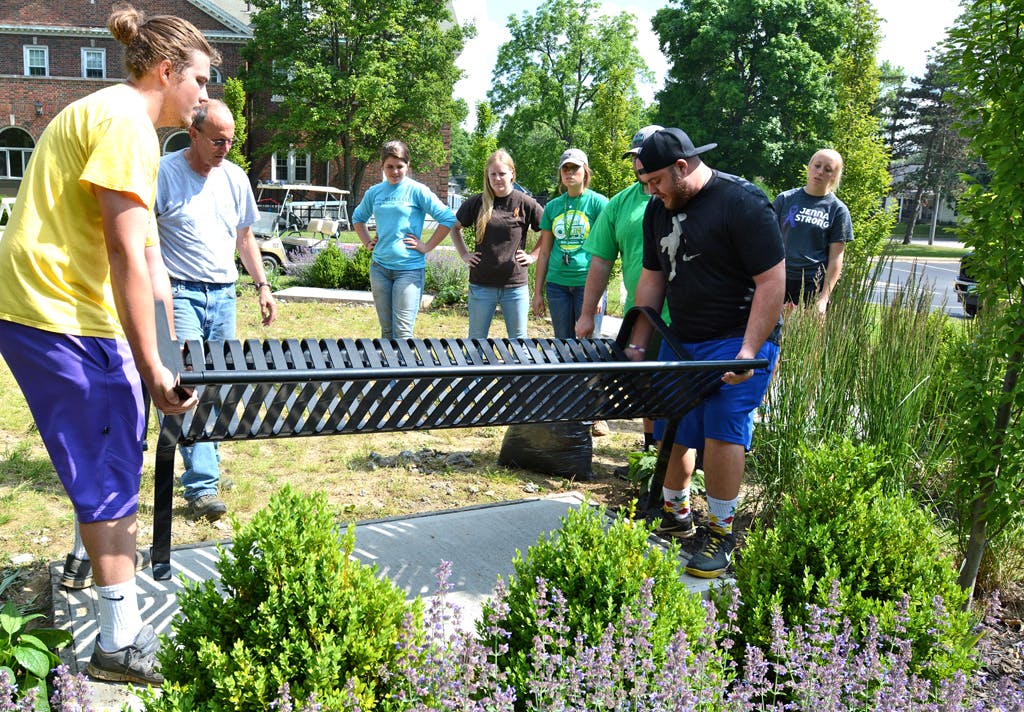Students Resided in Twin Ash Hall for 100 Years
Monte Anderson’s summer horticulture class may not realize it, but they are treading on history that dates back nearly to the founding of the College 145 years ago.
(LEFT) Horticulture students Austin Gray (left) and Garyck Todd do the heavy lifting as they place the first of the steel benches on cement slabs.
The students are building a landscaped gathering area between Bailey and Denver halls in the northeastern part of campus. It features a ring of seven benches placed on cement slabs surrounded by hornbeam trees, shrubbery, ornamental grasses, catmint and black-eyed Susan flowers. Grass is being planted inside the circle.
It is located on the site of a wooden gazebo that had fallen into disrepair and was razed last year. The College’s Marketing Club under the direction of professor Harold Thomas constructed the gazebo in 1985 as a gift to the College.
That structure stood on the site of Twin Ash Hall, which was erected during the second year classes were offered, in 1872, at the newly opened Wilmington College. Twin Ash originally was a private boarding house located in a wooded area known as Madden’s Thicket.
WC’s first president, Lewis Estes, and his family moved from third floor College Hall into the boarding house upon its opening, as did a number of students. The College purchased the building for $4,000 in 1904 and used it as a women’s dormitory until the 1970s.
Once owned by WC, the structure became known as Twin Ash Hall, named after a pair of ash trees that grew in front of the house. The facility featured a long room on the main floor that was used as a kitchen and dining area. In 1915, a cement veranda was installed across the front of the building.
A third floor was added to the structure in 1920, paid for by the daughter of an early housemother of the women’s dorm. Upon outliving its use as a residence hall, the Art Department took over the building from 1972 until it was torn down in 1984.
